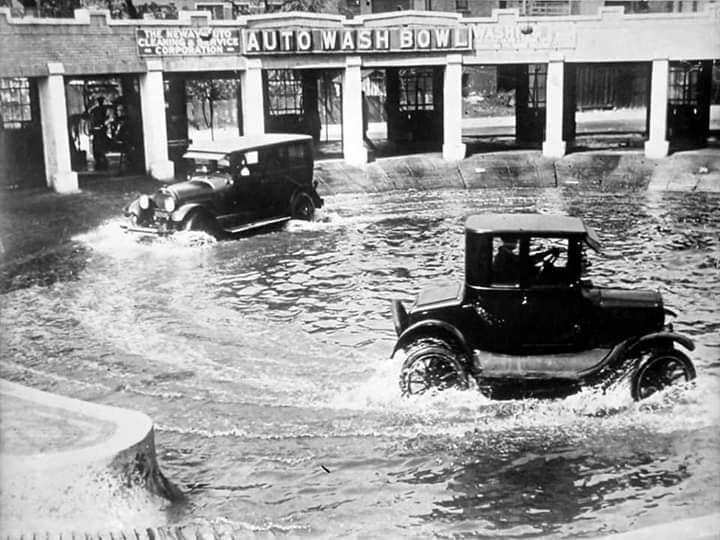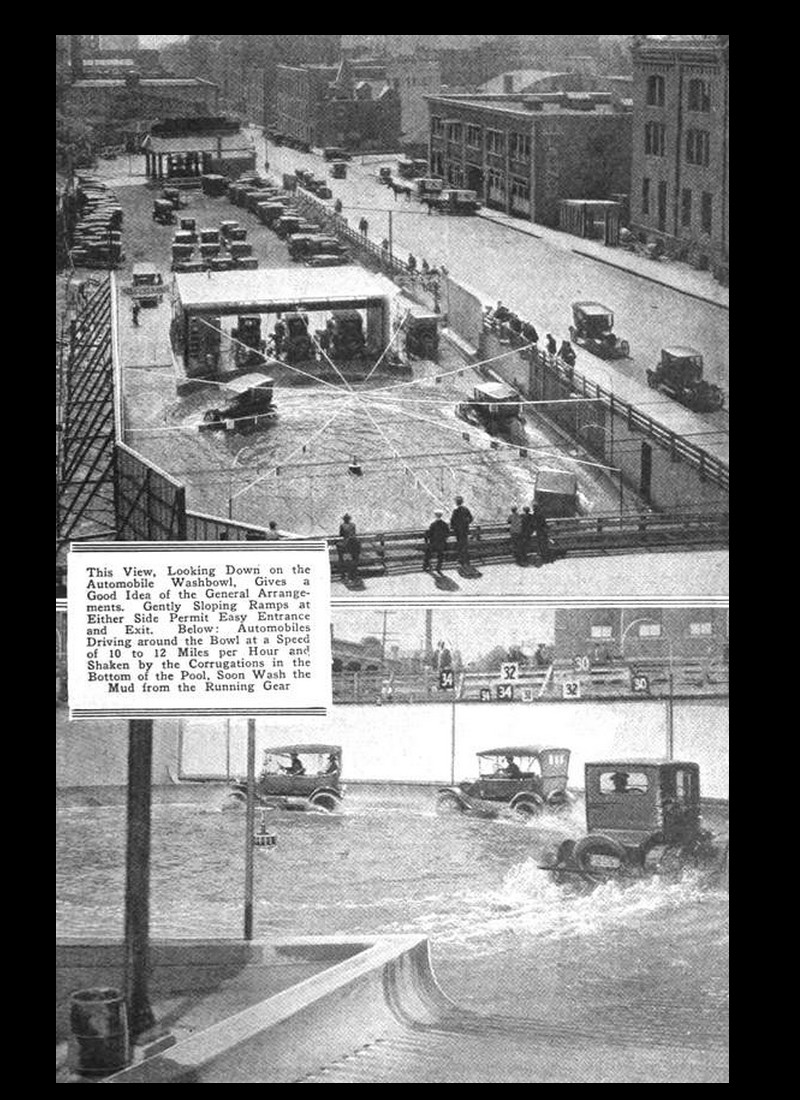Car wash bowl
- COCKPIT
- Mar 26
- 2 min read
In 1924, the city of Chicago, United States, opened its first car wash. Its concept was highly original, based on a 1921 patent by inventor C.P. Bohland, who had already created two in St. Paul, Minnesota. Burkhartsmeier purchased the rights in 1924 and built his bowl and gas station at a cost of $20,000. An amusing side note: The architect on the job, William C. Presto, was a former employee of Louis Sullivan, who later achieved fame for giving the impoverished Sullivan his final commission, the design of the facade of the Krause Music Store in Lincoln Square and the richly decorated Art Deco building.
The principle is to drive vehicles in circles in a ribbed concrete basin nearly 80 feet (approx. 25 m) wide, measuring approximately 16 inches (approx. 40 cm) at its deepest point in the center.
Customers paid 25 cents, about $3.27 (€2.70) today, to an attendant who attached a protective rubber cover to the radiator.
Customers then entered the bowl via a ramp and drove their cars around the bowl at a speed of about 10 miles per hour (approximately 16 km/h). Ridges in the concrete caused the car and the water to vibrate, creating a rocking motion that helped remove all the mud from the chassis and wheels.
The process lasted about three or four minutes and could wash 75 cars per hour. The car then exited the bowl, where customers who wanted a complete wash could enter one of the bays where the rest of the car would be cleaned.
This was useful in the days when many roads were still unpaved and their undersides were constantly dirty. But as road conditions deteriorated, the automatic car wash bowl became less useful.
The car wash tub was just another novelty as car wash technology evolved. By the 1930s, the last one had closed.










Comments